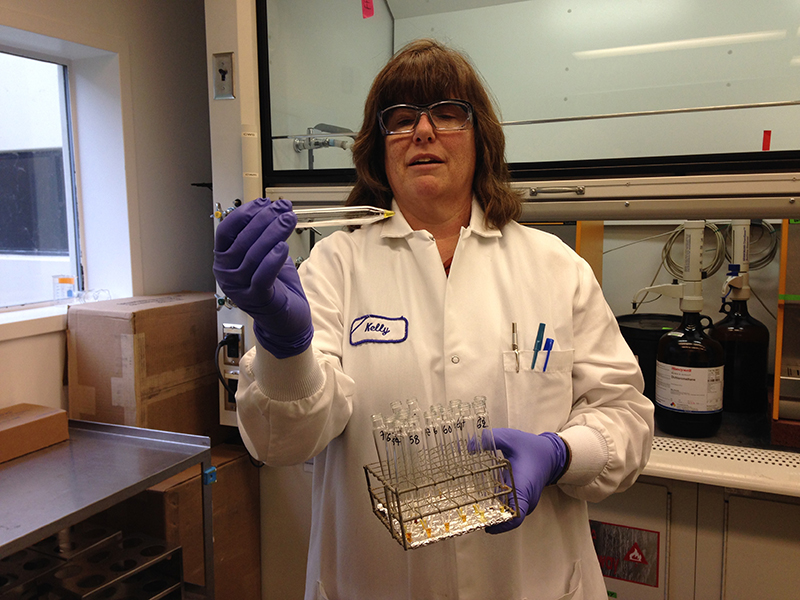
For the first 14 years of our agency’s existence, Ecology’s laboratory functions fell within the scope of the Water Quality Program. Lab activities largely took place at separate facilities in Tumwater and Redmond.
Lab consolidation
In Sept. 1982, Governor John Spellman directed state agencies to consolidate laboratory facilities at two sites in Olympia and Seattle. In a follow-up memo issued the same day, Spellman suggested paying special attention to the U.S. Environmental Protection Agency’s (EPA) Region 10 facility in Manchester. According to the memo, Ecology’s director, Don Moos had built a relationship with EPA and could facilitate discussions and cooperation.
Subsequent lab consolidation studies headed by the Washington Department of Social and Health Services determined this was unfeasible because of unique needs on the parts of the Washington State Patrol and the Department of Agriculture. A March 1983 memo by former DSHS secretary Alan J. Gibbs suggested closing Ecology’s Redmond site and moving operations to Olympia or Fircrest and moving operations in Tumwater to a consolidated facility in Olympia. The same memo dismissed the possibility of large-scale cooperation at the EPA facility.
“It will not be possible to make much use of the Manchester Environmenal Laboratory (MEL) operated by the United States Environmental Protection Administration (sic). It is far too small to accommodate state agencies,” Gibbs wrote. “The Department of Ecology has taken advantage of the limited space available at Manchester and located some operations there. Additional cooperative use of the Manchester laboratory for expensive, specialty analysis should be encouraged.”
Ecology already had a foot in the door
By this point, Ecology already had one scientist working at Manchester under the supervision of EPA’s lab director. By the end of 1983 Ecology would have three scientists stationed there to take advantage of equipment the state couldn’t afford to purchase, in particular, instrumentation designed to test for certain metals in water samples and toxic materials in Commencement Bay.
By May 1984, Ecology signed an interagency agreement with EPA to permanently station up to 18 scientists at Manchester on a long-term basis. According to the agreement, EPA equipment had as much as 15 percent downtime, leaving ample opportunity for Ecology staff to test about 3,300 samples a year for metals, toxics, nutrients, acid rain and more. EPA was committed to providing equipment and training to Ecology scientists.
Deborah Clark, who started her career at MEL as an administrative assistant in 1989, described the early years of the relationship between EPA and Ecology as very collaborative, with scientists from each agency sharing equipment and working on each other’s samples. They also used to share copy and secretarial services.
“It’s very different now because we share absolutely nothing, but part of the reason we went there was to share resources,” Clark said. She said the separation started in the early 2000s when scientists from the two agencies stopped running each other’s samples. “As of 2015 they couldn’t even use our copy machine. It hasn’t really harmed relationships because it was their auditors who decided they couldn’t use state resources.”
Recent Accomplishments
In the years since then, the scientists at MEL have stayed busy.
In 2019, MEL coordinated, transported, prepared, extracted, analyzed, and reported 350 samples in support of the Olympia Brewery spill, helping to determine and document the extent of PCB contamination in surrounding waterways. MEL also found dangerously high levels of toxic cadmium and lead in children's products, leading to the recall of 15,000 products sold nationwide and $200,000 in refunds to consumers.
Now, MEL is Washington’s premier environmental laboratory. MEL employs 22 people including chemists, lab technicians, and administrative support. According to MEL’s director, Alan Rue, scientists there conduct about 200,000 analyses a year.
In addition to analyzing Ecology’s samples, MEL provides services to local, state, federal, and tribal governments.

